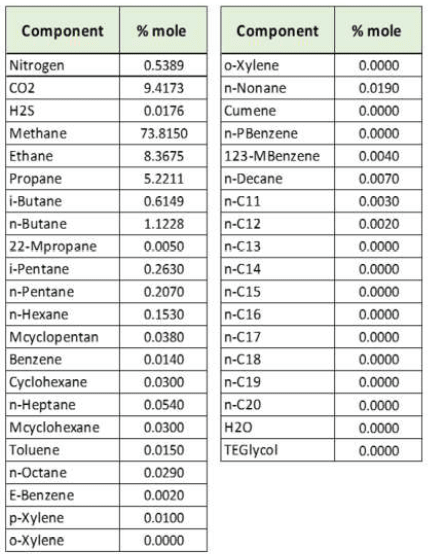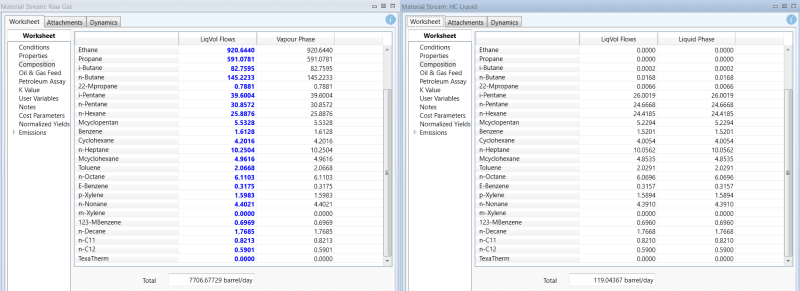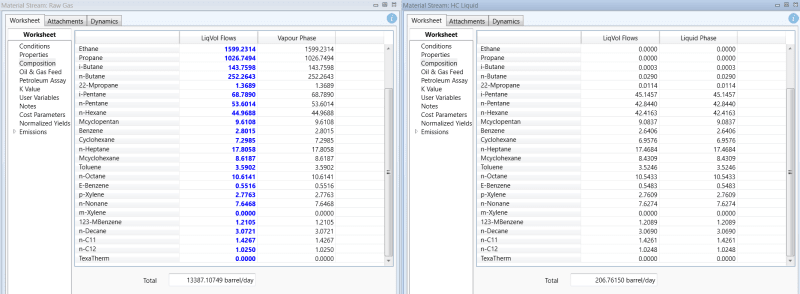Lowrentstuff
Computer
- Dec 30, 2022
- 10
Hello, I'm new in natural gas processing and refining.
I have this problem in that I need to separate HC liquid from Raw Natural Gas fresh from the well (@ 200 degF). The gas composition has very low water composition and low heavy carbon composition, thus its dew point temperature is around 97 degF and it has 17 MMSCFD molar flow rates at 1000 psig. They expect the separated gas around 30 MMSCFD and the liquid hydrocarbon flow rate at 1200 bbl/day. (I run simulations in Hysys for the problems)
My Question:
- Is there any way to increase the dew point temperature? since I only have 1 source of well.
- How can I increase the molar flow rates, so I can reach the specified properties?
- Is there usually any initial processing for the raw gas before I perform the separating process?
- if it's possible, can someone share their learning source for the process engineering of natural gas? I was initially a drafter and learned much about separator mechanical and sizing referring to GPSA, API, ASME, and stuff but lacked processing capability.
- if it's possible, can someone also share some of your works that use Hysys simulation (flow chart is enough) for processing raw natural gas from well as an example? Because it's easier to understand if there is an example. Even though I can find it on the internet, I'm not sure if it's really done by a professional and applicable in the real process (because I believe it must be more complicated).
I have this problem in that I need to separate HC liquid from Raw Natural Gas fresh from the well (@ 200 degF). The gas composition has very low water composition and low heavy carbon composition, thus its dew point temperature is around 97 degF and it has 17 MMSCFD molar flow rates at 1000 psig. They expect the separated gas around 30 MMSCFD and the liquid hydrocarbon flow rate at 1200 bbl/day. (I run simulations in Hysys for the problems)
My Question:
- Is there any way to increase the dew point temperature? since I only have 1 source of well.
- How can I increase the molar flow rates, so I can reach the specified properties?
- Is there usually any initial processing for the raw gas before I perform the separating process?
- if it's possible, can someone share their learning source for the process engineering of natural gas? I was initially a drafter and learned much about separator mechanical and sizing referring to GPSA, API, ASME, and stuff but lacked processing capability.
- if it's possible, can someone also share some of your works that use Hysys simulation (flow chart is enough) for processing raw natural gas from well as an example? Because it's easier to understand if there is an example. Even though I can find it on the internet, I'm not sure if it's really done by a professional and applicable in the real process (because I believe it must be more complicated).



